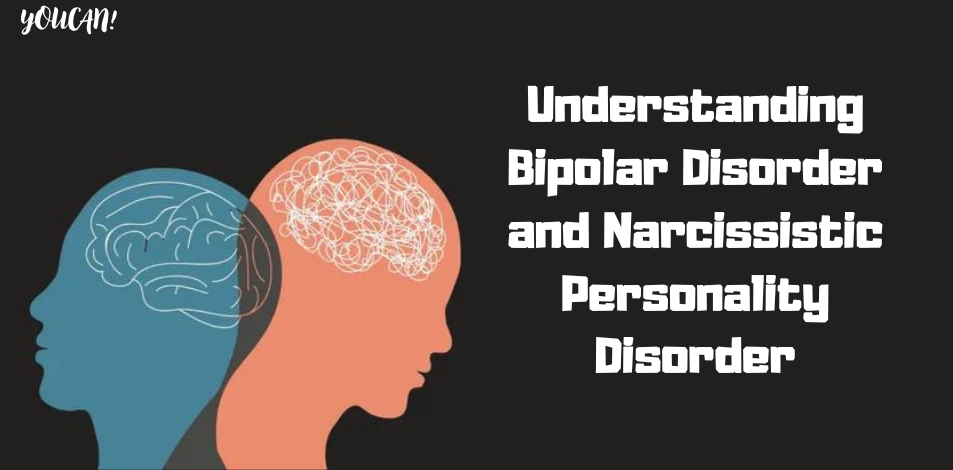
Mental health disorders can deeply affect individuals and their relationships. Two commonly misunderstood conditions are Bipolar Disorder and Narcissistic Personality Disorder (NPD). While they may share some overlapping traits, these disorders are distinct in their causes, symptoms, and treatment approaches. Understanding their differences and similarities is essential to better support those affected and avoid harmful misconceptions.
What is Bipolar Disorder?
Bipolar Disorder, formerly known as manic-depressive illness, is a mental health condition characterized by extreme mood swings. These swings include episodes of mania (elevated mood, high energy, euphoria) and depression (deep sadness, hopelessness, low energy). There are two primary types of Bipolar Disorder:
Bipolar I Disorder: Defined by manic episodes that last at least seven days or by manic symptoms severe enough to require hospitalization. Depressive episodes also occur, typically lasting at least two weeks.
Related : 5 Types of Narcissism and How to Spot Them
Bipolar II Disorder: Characterized by a pattern of depressive and hypomanic episodes (less severe than full-blown mania). Hypomania is not as intense as mania but still involves elevated mood and heightened activity levels.
People with Bipolar Disorder experience mood fluctuations that can be unpredictable and disruptive to daily life. However, with proper treatment, many individuals can manage their symptoms effectively.
What is Narcissistic Personality Disorder?
Narcissistic Personality Disorder (NPD) is a personality disorder marked by an inflated sense of self-importance, a need for excessive admiration, and a lack of empathy for others. People with NPD often have an exaggerated sense of their talents and achievements, believe they are superior to others, and expect special treatment.
Common symptoms of NPD include:
- Grandiose self-perception
- Preoccupation with fantasies of success, power, beauty, or ideal love
- A belief that they are “special” and unique
- A need for excessive admiration
- A sense of entitlement
- Exploitative behavior in relationships
- Lack of empathy
- Arrogance or haughty behaviors
NPD often leads to difficulties in relationships, as individuals with the disorder may struggle to recognize or care about the needs and feelings of others. Unlike Bipolar Disorder, NPD is not typically marked by mood swings but rather by a persistent pattern of behavior and thought.
Differences Between Bipolar Disorder and Narcissistic Personality Disorder
While both disorders can lead to significant interpersonal challenges, there are key differences between them.
Related : Borderline Personality Disorder and Narcissism: Understanding the Differences
Mood Fluctuations vs. Personality Traits:
- Bipolar Disorder is primarily characterized by mood swings between mania and depression. These mood changes are episodic, meaning they occur in cycles and are not constant.
- NPD, on the other hand, involves a consistent pattern of behavior centered around self-importance and a lack of empathy. People with NPD do not experience the rapid mood swings typical of Bipolar Disorder.
Self-Perception:
- During manic episodes, individuals with Bipolar Disorder may have an inflated sense of self-esteem or grandiosity, but this is temporary and linked to their mood episode.
- In NPD, grandiosity is a core, enduring part of the individual’s self-image, not a symptom tied to a mood episode.
Empathy:
- People with Bipolar Disorder, outside of their manic or depressive episodes, may demonstrate normal levels of empathy and understanding in relationships.
- Those with NPD, however, consistently show a lack of empathy and may have difficulty understanding or caring about others’ emotions.
Self-Reflection:
- Individuals with Bipolar Disorder may feel remorse or embarrassment after a manic episode once they regain stability.
- In contrast, people with NPD often do not acknowledge their behavior as problematic and may not feel remorse or regret in the same way.
Co-occurrence of Bipolar Disorder and NPD
In some cases, individuals may be diagnosed with both Bipolar Disorder and Narcissistic Personality Disorder. This can make diagnosis and treatment more complex, as symptoms may overlap or exacerbate one another. For example, during a manic episode, a person with both disorders might exhibit extreme grandiosity, impulsivity, and a lack of concern for others.
However, it is important to distinguish between mood episodes in Bipolar Disorder and the enduring traits of NPD. A mental health professional can provide a thorough assessment to determine the presence of one or both conditions.
Treatment Approaches
Both Bipolar Disorder and Narcissistic Personality Disorder require tailored treatment plans.
Bipolar Disorder: Treatment typically includes a combination of mood stabilizers, antipsychotic medications, and psychotherapy. Cognitive-behavioral therapy (CBT) can help individuals manage mood swings and develop coping strategies.
Narcissistic Personality Disorder: Treatment for NPD often involves long-term psychotherapy, particularly talk therapy aimed at increasing empathy, understanding one’s behavior, and developing healthier interpersonal relationships. Medications are not typically used for NPD, but they may be prescribed if the person has co-occurring mental health conditions, such as depression or anxiety.
Conclusion
Understanding the distinctions between Bipolar Disorder and Narcissistic Personality Disorder is crucial for accurate diagnosis and treatment. While they may share some superficial similarities, such as moments of grandiosity or difficulties in relationships, they are fundamentally different in their underlying causes and symptoms. With the right approach, individuals with either condition can work towards healthier relationships and more balanced emotional lives.




